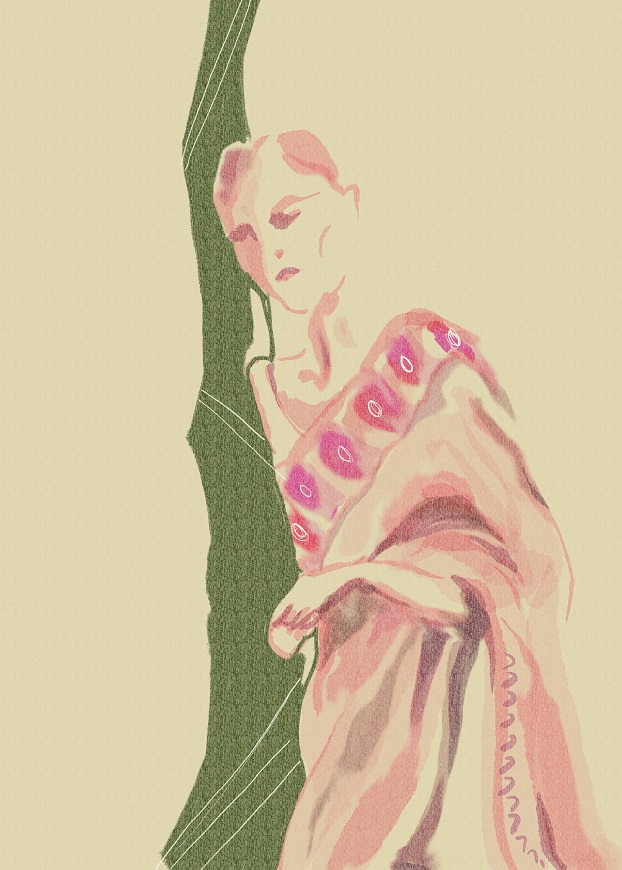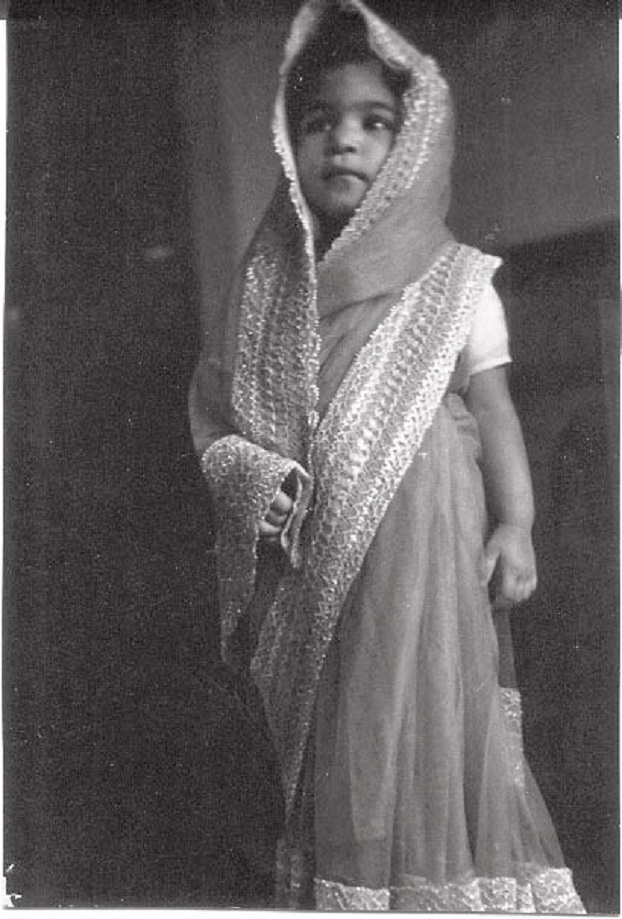How the drape holds meaning and memory for the desi mind, body, and soul. A series of interview-vignettes, showcasing uber serious sari love, brought out via passion, history, politics, through interviews with people across the spectrum who love to drape it, and also, talk about it!
* * *

Interviewing Laila Tyabji for Sentimental Glimpses of the Sari, was like going back to the source code. If you’re ever looking for she who embodies the statement in the statement sari, it is she, it is she, it is she.
Laila has written extensively about the recent politicization of the sari — here, among others — and it continues to be her favourite garment. Having worn “everything from Bermudas to bellbottoms” till the age of 50, she says she “slipped effortlessly into wearing only saris” soon after. As an impassioned crafts activist and co-founder of Dastkar — every Dilli wali and wala’s go-to spot for all things crafty, since Dastkar and Nature Bazar are synonymous! — it is no wonder that Laila ji has strong opinions on the sari. And while she distances herself from the white noise — “everyone gets so didactic and humourless about all these so-called issues that one almost wants to rebel and disagree” — Laila ji knows how to separate the riff from the raff.
“I do think that on occasions when one is the official face of India — not just Cannes, but a diplomat or diplomat’s wife at an official occasion abroad, or the voice of India at an international conference for example, one should wear a sari or some other Indian dress. You are there to represent India after all,” she says emphatically, only to add some humor, “Think of it as a uniform.”
Edited excerpts from my interview with Laila Tyabji:
When was the first time you wore a sari?
The event is well documented (see image). It’s in Brussels where my father was Ambassador — around 1949 or so. It is one of my mother’s saris doubled to fit. A pale pink tulle with a pink and gold border in tatted lacework made by my paternal grandmother.

Which sari-wearing personality did you idolize, growing up?
My mother was my ideal in this, as in everything else. I loved her aesthetic and elegance. Interestingly though, we wore our saris quite differently, since I learnt to tie my sari from an aunt while I was at Art School in Baroda. We also didn’t borrow each other’s saris as in my youth, my color and design choices were very different from her muted subtle style. I only wore her saris after she passed away, tragically early.
Indira Gandhi was someone else who wore a sari with great élan and appropriateness.
Among the younger lot, I think Sonam Kapoor wears a sari with great style.
Have there been spaces that have influenced if and how you wear a sari? And any others where it made you feel stifled?
I’ve never felt, at any stage of my life, restricted or stifled by a sari (except when caught in a rainstorm). It’s difficult to think of any other dress that than look incredibly sexy, or awe-inspiringly stately — all in the flip of a cloth!
I don’t feel it turns me into a behenji, and I haven’t encountered a situation where it’s inappropriate, though I believe there are nightclubs in Delhi where entry in a sari is not permitted.
If you had to think of a male counterpart for the sari, what would it be?
I’d choose the bandh-gala and jodhpur pants or narrow trousers as the most appropriate formal male Indian dress. It works for most 21st century social and business situations; plus it is an all-weather outfit, unlike a dhoti or lungi.
I’d recommend the narrow Aligarh pyjama rather than churidar — the latter requires a skilled tailor plus well-shaped legs to set them off.
Why and how did the sari land up as one of the sites of political charcha you think?
You don’t have to wear a sari to be a “proud Indian” or a nationalist, nor is it the traditional dress of every Indian woman. On the other hand, I am relieved that Sushma Swaraj and Pratibha Patil never took to Hilary Clinton type pantsuits!
The trouble is that everyone gets so didactic and humorless about all these so-called “issues” that one almost wants to rebel and disagree. After reading some of the jingoistic misogynistic comments about mini-skirt-wearing women I almost want to put on a bikini myself!
Hold that thought Laila ji! Resonances feature in Chapter Two featuring documentary filmmakers Paromita Vohra and Shabani Hassanwalia.
* * *
Pooja Pande is a writer-editor who grew up in, considers home, and hence has a suitably complex love-hate relationship with the capital city of India, Delhi. Her first book is Red Lipstick, a literary-styled memoir on celebrity transgender rights activist Laxminarayan Tripathi. Find her on Twitter at @derrindo.












